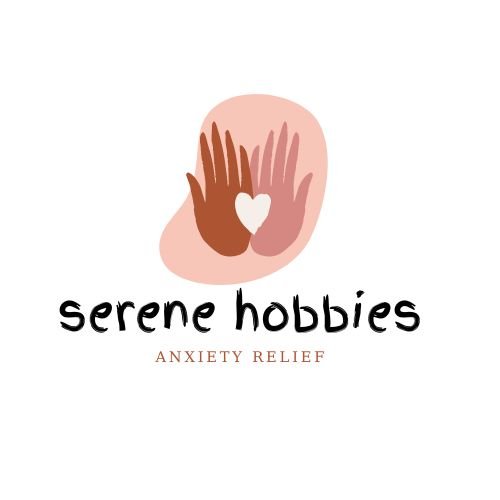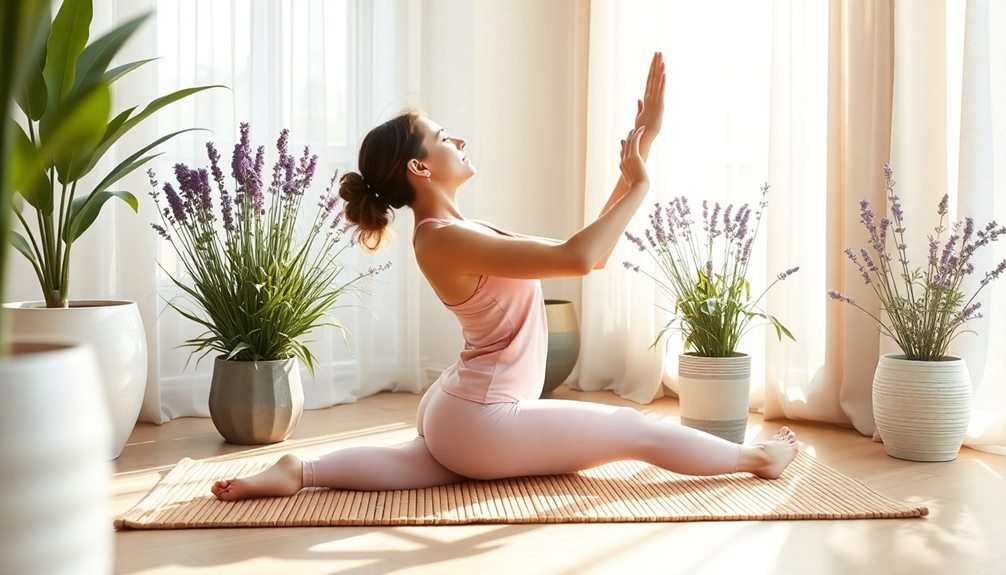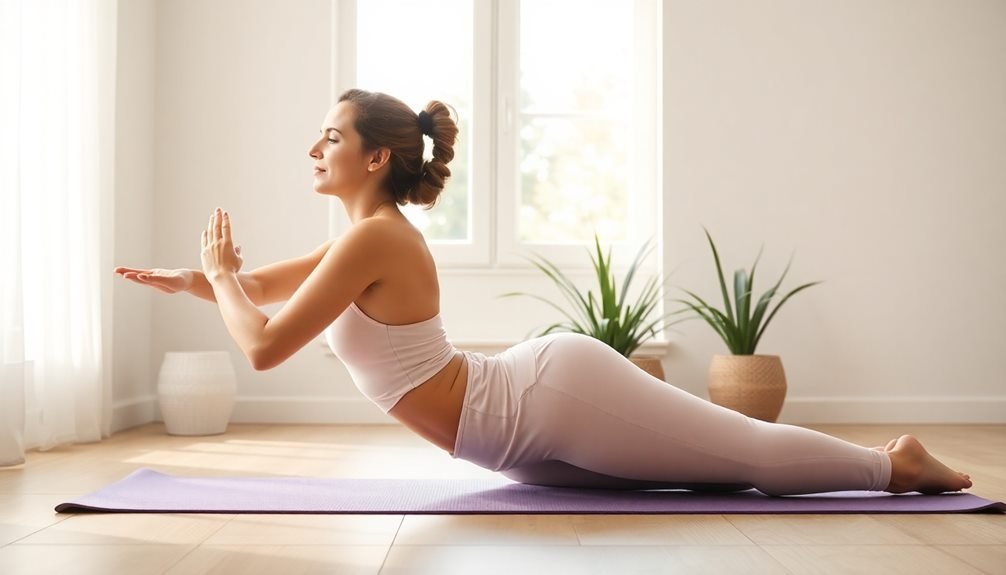Sculpting clay can be a powerful hands-on remedy for anxiety. As you mold and shape the clay, you're engaging multiple senses, which helps shift your focus away from anxious thoughts. The tactile sensation and repetitive motions promote relaxation and can induce a meditative state. Clay work allows you to express emotions non-verbally, improving emotional regulation and fostering a sense of calm. Whether you choose polymer, earthen, or air-dry clay, the process of creating something tangible can boost your self-efficacy and confidence. By setting up a comfortable workspace and learning basic techniques, you'll reveal a world of therapeutic benefits through this ancient art form.
The Science Behind Clay Therapy

Clay therapy's effectiveness in reducing anxiety stems from its multisensory engagement of the brain. When you work with clay, you're activating multiple sensory pathways simultaneously. The tactile sensation of molding clay stimulates your sense of touch, while the visual aspect of watching your creation take shape engages your visual cortex. This sensory integration can help shift your focus away from anxious thoughts and into the present moment.
The act of kneading and shaping clay also releases tension in your muscles, promoting physical relaxation. As you manipulate the clay, you're engaging in a form of repetitive motion that can induce a meditative state, similar to the effects of mindfulness practices. This can lower your heart rate and reduce stress hormones like cortisol.
Neurologically, clay therapy activates the limbic system, which is responsible for processing emotions. By engaging in a creative, non-verbal activity, you're giving your brain a chance to process and express emotions that might be difficult to articulate verbally. This can lead to improved emotional regulation and a greater sense of calm.
Choosing the Right Clay
When commencing your clay therapy journey, selecting the right type of clay is essential for a satisfying and therapeutic experience. You'll find several options available, each with unique properties that can affect your sculpting process and anxiety relief.
Polymer clay is an excellent choice for beginners. It's pliable, doesn't dry out, and can be baked to create permanent pieces. This allows you to work at your own pace without worrying about the clay hardening.
Earthen clay, such as terracotta or stoneware, offers a more traditional sculpting experience. It's natural and connects you to the earth, which can be grounding for those with anxiety.
Air-dry clay is another popular option. It doesn't require baking and hardens on its own, making it convenient for those without access to a kiln.
For a softer, more malleable experience, try plasticine clay. It never hardens, allowing for endless reshaping and experimentation.
Consider your skill level, project goals, and personal preferences when choosing your clay. Don't be afraid to experiment with different types to find what works best for your anxiety management needs.
Essential Tools for Clay Sculpting

With the right clay in hand, you'll need a few essential tools to enhance your sculpting experience and maximize its anxiety-relieving benefits.
Start with a sturdy work surface, like a wooden board or a smooth tabletop, to provide a stable foundation for your creations. You'll also want a set of sculpting tools, which typically include wire loop tools, ribbon tools, and needle tools. These will help you shape, smooth, and add intricate details to your clay pieces.
Don't forget to have a spray bottle filled with water nearby. It'll help you keep your clay moist and workable, especially when you're spending extended periods on a project. A rolling pin or acrylic rod can be useful for flattening clay and creating even surfaces.
Finally, consider investing in a good set of carving tools to add texture and patterns to your sculptures.
To create a calming atmosphere while you work, try incorporating these elements:
- A soft, warm light source to illuminate your workspace
- Soothing background music or nature sounds
- A comfortable chair or cushion to support good posture
Setting Up Your Workspace
To begin your clay sculpting journey, you'll need to set up a dedicated workspace.
Choose a comfortable spot in your home where you can relax and focus on your art.
Once you've selected your area, gather all your essential clay tools and arrange them within easy reach for a smooth sculpting experience.
Choose a Comfortable Spot
Nestled in a quiet corner of your home, your clay sculpting workspace should be a sanctuary for creativity and relaxation. Choose a spot that's comfortable and inviting, where you'll want to spend time immersed in your craft.
Consider factors like lighting, ventilation, and accessibility to water for cleaning your hands and tools.
Your ideal sculpting space should have:
- A sturdy table or desk that's the right height for you to work comfortably while seated
- A comfortable chair that supports good posture and allows you to adjust your position as needed
- Adequate storage for your clay, tools, and ongoing projects
Ensure you have enough room to move freely and spread out your materials. Natural light is best for seeing colors and details accurately, but if that's not possible, invest in a good quality desk lamp.
Keep your space clutter-free to minimize distractions and promote a sense of calm. Personalize your area with inspiring artwork or objects that bring you joy.
Gather Essential Clay Tools
Once you've set up your comfortable sculpting space, it's time to gather the essential tools for your clay work. While your hands are the most important tools, a few additional items will enhance your sculpting experience.
Start with a set of wooden or metal modeling tools, which come in various shapes and sizes for smoothing, cutting, and detailing your clay creations. Include a wire clay cutter for slicing through larger clay blocks and a rolling pin for flattening clay into sheets.
Don't forget a spray bottle filled with water to keep your clay moist and workable. A sturdy work board, preferably made of wood or plastic, will provide a clean surface for your projects.
Consider adding texture tools like sponges, combs, or found objects to create interesting patterns on your clay. If you plan to join clay pieces, keep a small container of slip (watered-down clay) handy.
Basic Clay Sculpting Techniques

Clay-shaping fundamentals form the backbone of any sculpting practice, especially when using it for anxiety relief. As you begin, focus on mastering three basic techniques: pinching, coiling, and slab building.
Pinching involves using your thumb and fingers to shape small pieces of clay, perfect for creating simple forms or adding details. Coiling requires rolling clay into long, snake-like strips and stacking them to build up your sculpture. Slab building uses flat sheets of clay, which you can cut, shape, and join to create more angular or geometric forms.
As you work with the clay, you'll find these techniques naturally soothing:
- Feel the cool, damp clay between your fingers as you pinch and mold it into shape.
- Watch the coils spiral upward, forming the walls of a vessel as you stack them carefully.
- Listen to the soft thud of your rolling pin as you flatten clay into smooth, even slabs.
Mindfulness Through Clay Manipulation
Building on these fundamental techniques, you can now explore how clay manipulation fosters mindfulness. As you work with clay, focus on the sensations in your hands and fingers. Feel the texture, temperature, and plasticity of the material. This tactile engagement draws your attention to the present moment, quieting anxious thoughts.
Practice deep, slow breathing while you manipulate the clay. Synchronize your breath with your movements, creating a rhythm that calms your mind and body. Observe how the clay responds to your touch, noticing the subtle changes in shape and form.
| Mindfulness Technique | Benefits | Practice Tips |
|---|---|---|
| Sensory Focus | Grounds you in present | Close eyes, explore texture |
| Breath Synchronization | Reduces anxiety | Match breath to clay movements |
| Non-judgmental Observation | Promotes acceptance | Describe clay changes objectively |
| Intentional Shaping | Builds self-efficacy | Set small, achievable goals |
| Repetitive Motions | Induces relaxation | Create patterns or textures |
Expressing Emotions With Clay

When you shape clay, you're not just molding a physical form—you're giving tangible expression to your emotions.
As you work the clay with your hands, you can channel your feelings into the sculpture, creating a visual representation of your inner state.
This tactile process allows you to release pent-up emotions, transforming abstract feelings into concrete objects you can see and touch.
Shaping Feelings Into Form
As you sit with a lump of clay before you, it becomes a canvas for your innermost feelings. Your hands begin to mold the malleable material, instinctively shaping it to match your emotions. This tactile process allows you to externalize your anxiety, giving it a tangible form you can see and touch.
As you work, you'll notice your feelings taking shape:
- Sharp, jagged edges might represent stress or anger
- Smooth, rounded forms could embody calmness or contentment
- Intricate patterns may reflect complex emotions or overthinking
Don't worry about creating a masterpiece; focus on the process of transferring your emotions into the clay. You might find yourself creating abstract shapes or recognizable objects – both are valid expressions of your inner state.
As you manipulate the clay, you're also reshaping your thoughts and feelings, gaining a new perspective on your anxiety.
This hands-on approach to emotional expression can be particularly helpful when words fail you. By giving physical form to your feelings, you're acknowledging them and creating a visual representation of your emotional landscape.
This tangible output can serve as a starting point for further reflection or discussion about your anxiety.
Tactile Emotional Release
The act of kneading, squeezing, and molding clay provides a powerful outlet for emotional release. As you work with the clay, you're engaging in a tactile experience that can help you process and express emotions that might be difficult to verbalize. The physical manipulation of the material allows you to channel your feelings into a tangible form, creating a bridge between your inner world and the external environment.
You'll find that the malleability of clay responds to your touch, mirroring the fluidity of your emotions. When you're feeling angry, you can punch and slam the clay, releasing pent-up frustration. If you're experiencing sadness, you might gently smooth and shape the clay, finding comfort in its soft texture. Anxiety can be addressed by creating intricate patterns or textures, focusing your mind on the present moment.
As you sculpt, you're not just creating art; you're engaging in a form of non-verbal communication with yourself. The clay becomes an extension of your emotional state, allowing you to explore and understand your feelings in a safe, controlled manner.
This tactile process can lead to insights and a sense of catharsis, helping you manage anxiety more effectively.
Clay Sculpting Exercises for Anxiety
Five simple clay sculpting exercises can help you manage anxiety and promote relaxation. Start by kneading the clay, focusing on its texture and temperature as you work it with your hands. This rhythmic motion can be soothing and grounding.
Next, try creating a worry stone by shaping a small, smooth pebble-like form that fits comfortably in your palm. Rub it gently when you feel anxious.
For a more expressive exercise, sculpt your emotions into abstract shapes. Let your hands guide you as you mold the clay to represent your feelings. This process can help externalize and process your anxiety.
Another technique involves creating a calming scene or object that brings you peace, such as a miniature garden or your favorite animal.
Finally, practice mindful destruction by slowly breaking apart a clay creation. This exercise can help you release pent-up tension and embrace impermanence.
As you engage in these exercises, focus on the following sensory experiences:
- The cool, damp texture of the clay against your skin
- The earthy scent that fills your nostrils as you work
- The subtle sounds of clay squishing and molding under your fingers
Group Clay Therapy Sessions

Group clay therapy sessions offer a unique opportunity to combine the benefits of creative expression with peer support. You'll find yourself in a room with others who share similar struggles, all working with clay to alleviate anxiety.
These sessions typically begin with a brief introduction and mindfulness exercise to center your thoughts. As you start molding the clay, you'll notice the therapist guiding the group through various techniques and prompts. You might be asked to create a shape representing your anxiety or sculpt a safe space.
While working, you're encouraged to share your thoughts and experiences with the group. This verbal expression, coupled with the tactile sensation of clay, can help you process emotions more effectively.
Group sessions also foster a sense of community. You'll learn from others' perspectives and coping strategies, realizing you're not alone in your journey.
The collaborative atmosphere often leads to increased self-awareness and empathy. By the end of the session, you'll haven't only created a tangible representation of your feelings but also connected with others in a meaningful way.
Displaying Your Clay Creations
Once you've completed your clay creation, what should you do with it? Displaying your artwork is an essential part of the therapeutic process, allowing you to reflect on your emotions and progress.
You don't need a fancy gallery; your home can serve as the perfect showcase for your clay pieces.
Consider these options for displaying your creations:
- Create a dedicated shelf or corner in your living room, arranging your pieces to tell a visual story of your journey through anxiety management.
- Use small pedestals or stands to elevate individual sculptures, drawing attention to their unique shapes and textures.
- Incorporate your clay art into your daily routine by placing pieces in areas you frequent, like your desk or bedside table.
Incorporating Clay Work Into Daily Life

Displaying your clay creations is just the beginning of your journey with this therapeutic art form. To truly reap the anxiety-reducing benefits of clay work, you'll want to make it a regular part of your daily routine. Set aside a specific time each day for your clay practice, even if it's just 15 minutes.
Create a dedicated space in your home where you can easily access your clay and tools, making it more likely you'll engage with the material. Keep a small piece of clay on your desk or nightstand to fidget with during stressful moments. This tactile distraction can help ground you when anxiety strikes.
Incorporate clay work into your mindfulness practice by focusing on the sensations of the clay as you manipulate it. Try creating a new small object each day as a form of visual journaling, expressing your emotions through shape and texture.
You can also use clay as a social activity, inviting friends or family to join you in sculpting sessions. By integrating clay work into various aspects of your life, you'll cultivate a powerful tool for managing anxiety and promoting relaxation.
Frequently Asked Questions
Can Children Benefit From Clay Therapy for Anxiety?
Yes, children can benefit from clay therapy for anxiety. You'll find it's an effective, tactile way for kids to express emotions, reduce stress, and improve focus. It's a fun, non-verbal outlet that can boost their confidence and self-awareness.
Are There Any Risks or Side Effects of Clay Sculpting Therapy?
You'll find clay sculpting therapy generally safe, but be aware of potential risks. You might experience minor skin irritation or allergies. There's also a slight chance of ingestion if you're not careful. Always follow proper hygiene practices.
How Long Does It Take to See Results From Clay Therapy?
You'll likely notice immediate stress relief when you start clay therapy. However, it can take a few weeks of regular practice to see significant improvements in your anxiety levels. Consistency is key for long-term benefits.
Can Clay Therapy Be Combined With Other Forms of Anxiety Treatment?
Yes, you can definitely combine clay therapy with other anxiety treatments. It's often used alongside traditional therapies like CBT or medication. You'll find it complements these approaches, providing a creative outlet and tactile stress relief.
Is Clay Sculpting Effective for All Types of Anxiety Disorders?
Clay sculpting can be effective for many anxiety disorders, but it's not a one-size-fits-all solution. You'll find it helpful for generalized anxiety and stress relief, but severe disorders may require additional professional treatment alongside creative therapies.
In Summary
You've discovered a powerful tool for managing anxiety through clay sculpting. As you continue to explore this tactile art form, you'll find yourself more grounded and present. Don't hesitate to experiment with different techniques and projects. Remember, it's not about creating perfect sculptures, but about the process itself. Make clay work a regular part of your self-care routine, and you'll reap the benefits of this soothing, hands-on therapy.





Leave a Reply